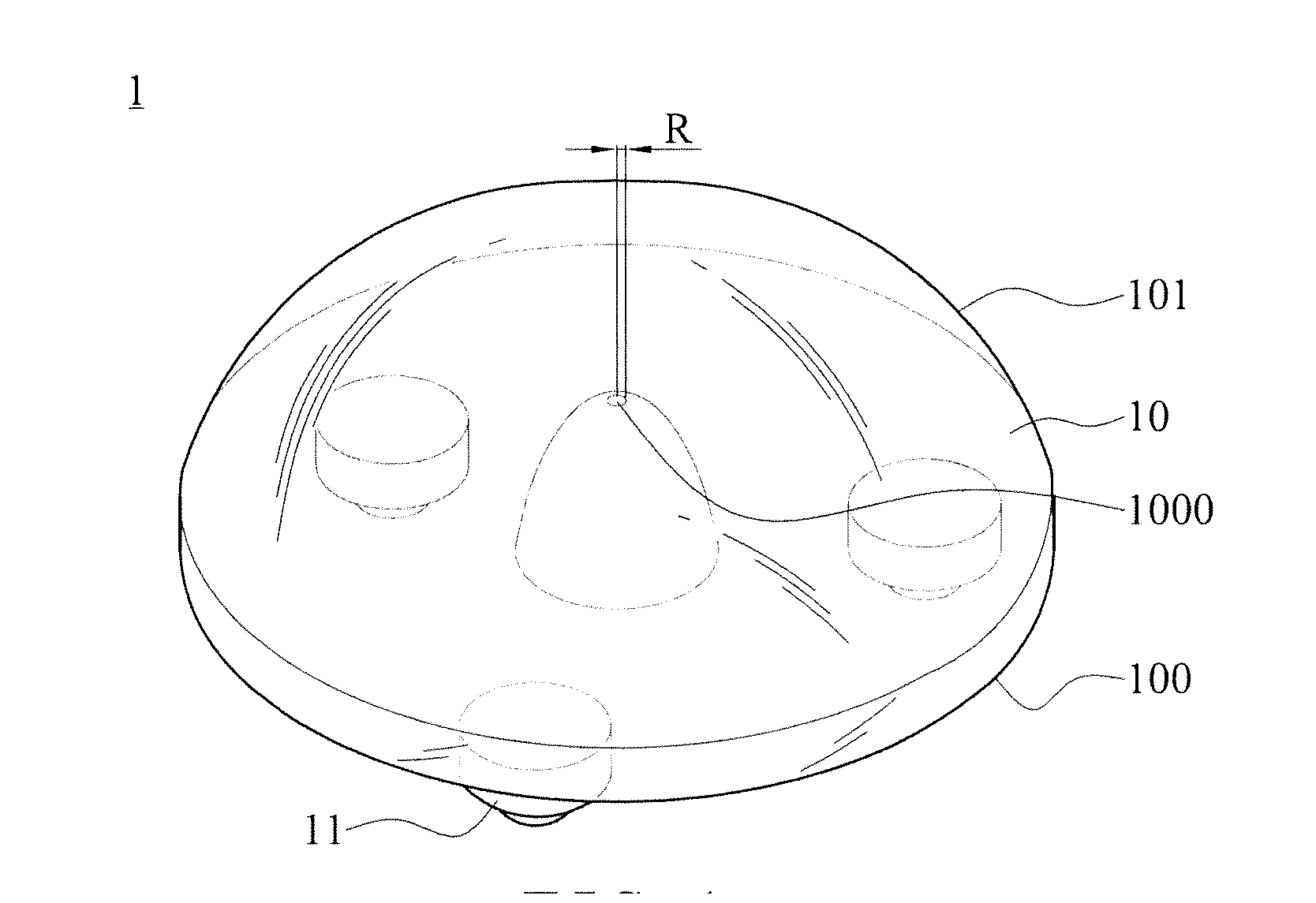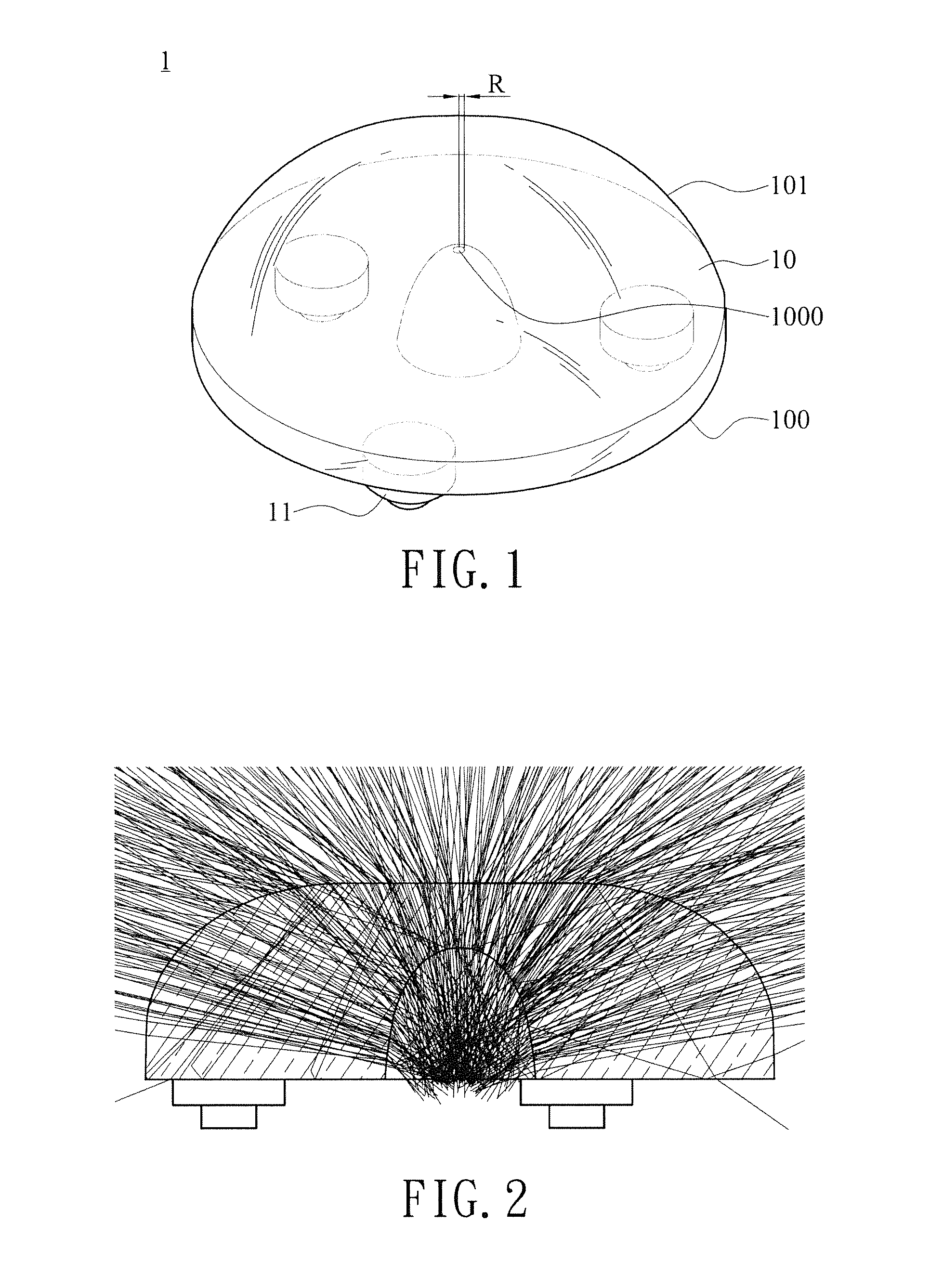Lens structure of a light emitting diode
a light-emitting diode and lens structure technology, applied in the field of optical lenses, can solve the problems of small lighting areas, affecting the effect of illumination of applied lighting equipment, and the difference of luminance between them is too large to achieve the effect of uniform illumination, and achieve the effect of improving the global illumination of lighting areas
- Summary
- Abstract
- Description
- Claims
- Application Information
AI Technical Summary
Benefits of technology
Problems solved by technology
Method used
Image
Examples
Embodiment Construction
[0021]The technical contents of the present invention will become apparent with the detailed description of preferred embodiments and the illustration of related drawings as follows.
[0022]With reference to FIG. 1 for a perspective view of a first embodiment of a lens structure of light emitting diode in accordance with the present invention. Taking a backlight module of a display device as an example, as shown in FIG. 1, the lens of a light emitting diode 1 is used to combine with a light emitting diode (not shown) and then to be applied as a backlight source. The lens structure of the light emitting diode 1 has a body 10 and a least one convex 11. The body 10 has an outer surface formed by connection of an edge of a light input surface 100 and an edge of a light output surface 101. A recess is formed on the central part of the light input surface 100 toward the light output surface 101 for receiving the light emitting diode, and the recess can be formed convergently from an arc sur...
PUM
 Login to View More
Login to View More Abstract
Description
Claims
Application Information
 Login to View More
Login to View More - R&D
- Intellectual Property
- Life Sciences
- Materials
- Tech Scout
- Unparalleled Data Quality
- Higher Quality Content
- 60% Fewer Hallucinations
Browse by: Latest US Patents, China's latest patents, Technical Efficacy Thesaurus, Application Domain, Technology Topic, Popular Technical Reports.
© 2025 PatSnap. All rights reserved.Legal|Privacy policy|Modern Slavery Act Transparency Statement|Sitemap|About US| Contact US: help@patsnap.com



